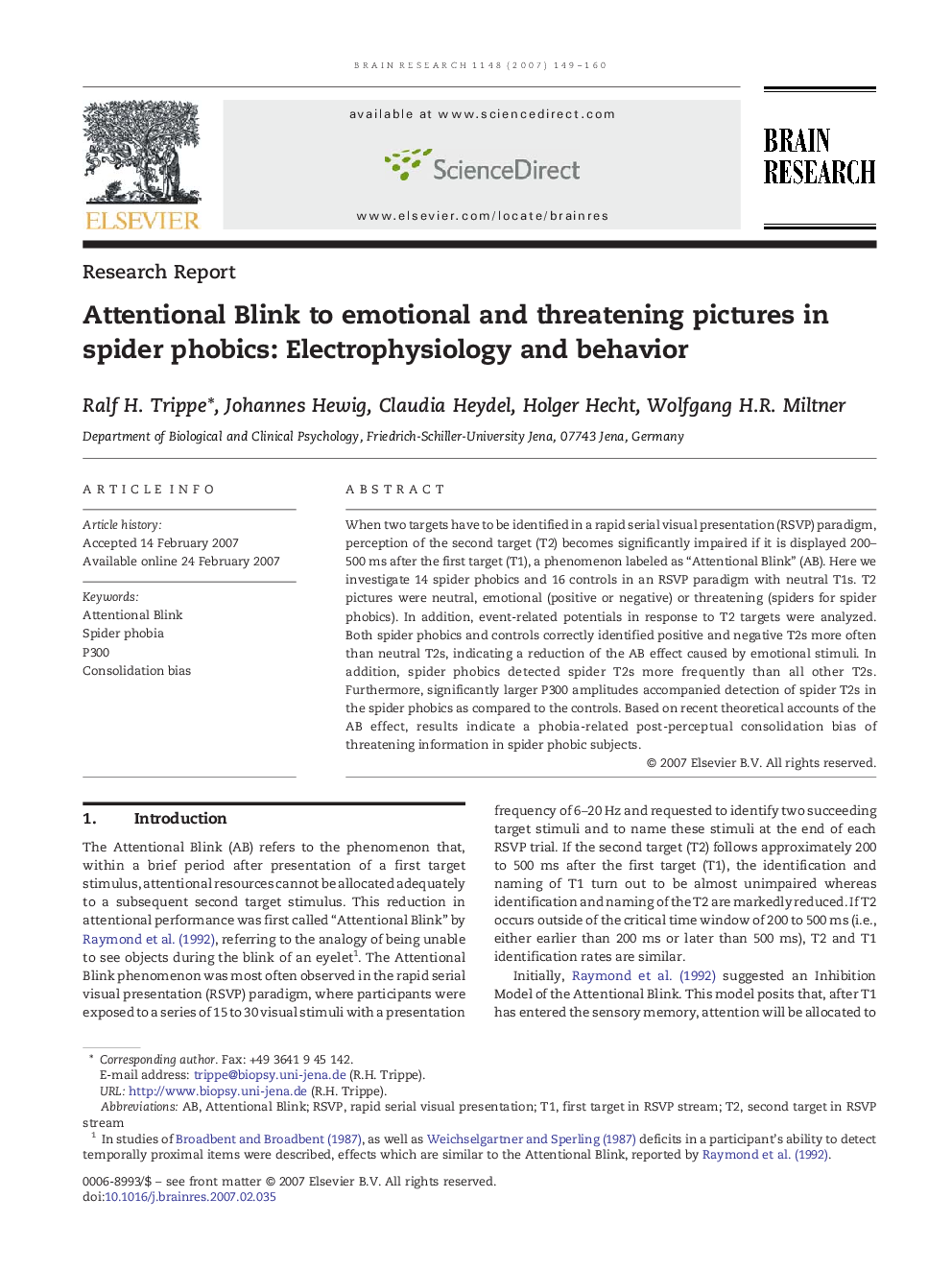| Article ID | Journal | Published Year | Pages | File Type |
|---|---|---|---|---|
| 4331336 | Brain Research | 2007 | 12 Pages |
When two targets have to be identified in a rapid serial visual presentation (RSVP) paradigm, perception of the second target (T2) becomes significantly impaired if it is displayed 200–500 ms after the first target (T1), a phenomenon labeled as “Attentional Blink” (AB). Here we investigate 14 spider phobics and 16 controls in an RSVP paradigm with neutral T1s. T2 pictures were neutral, emotional (positive or negative) or threatening (spiders for spider phobics). In addition, event-related potentials in response to T2 targets were analyzed. Both spider phobics and controls correctly identified positive and negative T2s more often than neutral T2s, indicating a reduction of the AB effect caused by emotional stimuli. In addition, spider phobics detected spider T2s more frequently than all other T2s. Furthermore, significantly larger P300 amplitudes accompanied detection of spider T2s in the spider phobics as compared to the controls. Based on recent theoretical accounts of the AB effect, results indicate a phobia-related post-perceptual consolidation bias of threatening information in spider phobic subjects.
